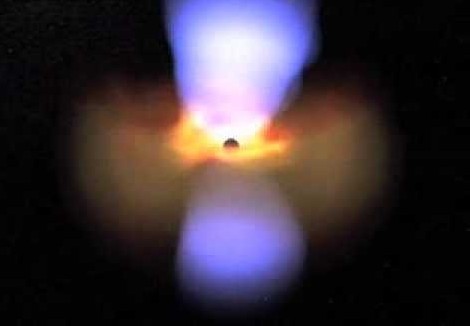Here is a continuation of this far out theory:
It also paints supermassive black holes as unpredictable, and capable of generating some of the brightest flares in the universe, almost on a whim.
Blowing bubbles
It may sound strange to talk about supermassive black holes as the source of the brightest lights in the universe. But this is why the centres of some galaxies, known as active galactic nuclei or AGN, shine so brightly. The idea is that as the supermassive black hole pulls matter in, this matter accretes in a surrounding disc, heats up and starts glowing.
When in April, at a meeting at Stanford University in California, Bill Mathews and Fulai Guo of the University of California, Santa Cruz, argued that the bubbles were caused by an outburst from Sagittarius A*. Their simulations showed that two intense jets of high-energy particles, like those produced by an AGN, streaming out from the vicinity of the black hole could have created the bubbles. The flare-up, they calculated, would have happened between 1 and 3 million years ago and lasted a few hundred thousand years (arxiv.org/abs/1103.0055v3).
So it seems the crux of their theory was that at certain times particular black holes could have been brighter than they are at this moment. Or at least the light that left them at the time.
And let’s check out this sweet video with some graphics of powerful jets.
